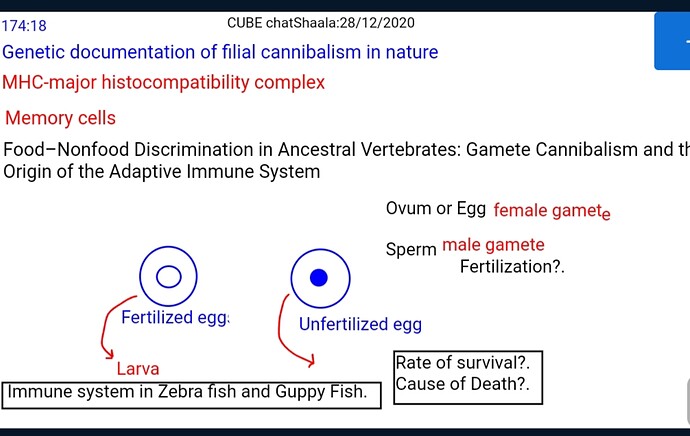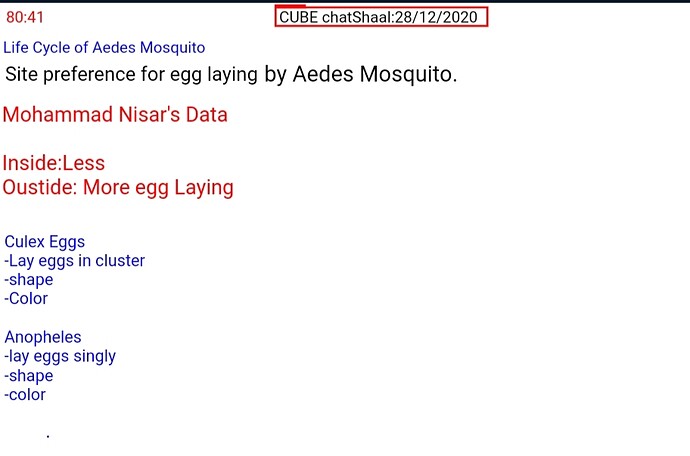Meeting URL
webinar.hbcse.tifr.res.in

A front-end for HBCSE web conferencing server. You can create your own rooms to host sessions, or join others using a short and convenient link.
Please click on the HBCSE Webinar above to join the CUBE ChatShaala
Timing:5.30 pm to 9.30 pm
Webinar will be recorded and recording link will be post in the same thread after the webinar.
Looking forward to your participation.
Thanks
CUBE ChatShaala on 28th December 2020
24 CUBists from 18 Centres had joined the webinar
Map
ASSAM
Narsing High School, Silchar: Hasina Begam
BIHAR
Patna: Kshipra
DELHI
Dyal Singh College: Dr P. Chitralekha
KERALA
The Cochin College, Ernakulam: Aarcha Soman, Bhavya, Deepthy Maria, Devika Devanath, Manjula Bhat, Sankara Narayan Menon
Thriprayar, Thrissur: Aswathy Suresh
Palakkad: Shrudhiga
Thanniam, Thrissur: Sidhy PP
Alapad, Thrissur: Vishnupriya
MAHARASHTRA
South Bombay: Arunan MC
Adarsha Vidyalaya, Chembur: Dhanashree Chandankar
Nerul: Drishtant M Kawale
Powai: Lydia Mathew
Dahanu, Palghar: Sachin Pradhan
Prabhadevi, Mumbai: Yash Sheregare
UTTAR PRADESH
Kanpur: Hina Mudgal
Moradabad: Kiran Yadav
WEST BENGAL
Garden High School, Kalyani: Koulab Mukherjee
Kolkata: Batul Pipewala, Sukriti Maity
Whiteboard screenshot of(
28/12/2020 ) CUBE CHATSHAALA…
We had discussed about Mosquito traps particularly Ovitraps…
What’s the objective of Ovitraps? Who are the collaborators?.
There were many questions that were being asked during the discussion: what’s the main objective?. How do we differentiate between different mosquitoes eggs like Aedes and Anopheles mosquito eggs?. What’s the attractant in the set up of Ovitraps?
Do we have any expectation s?.
Life cycle of Mosquito?.
We had discussed on Guppy Fish and zebra fish…
According to
@Aarcha’s observation Guppy fish feeds on their own child…
Immune system in Zebra fish and Guppy fish…
Rate of survival and what’s the cause of Death?..
. Why will the mosquitoes come to these white sticks kept in a black container instead of feasting of human blood!??
2. What is attracting the mosquitoes to this trap?
3. How often do these mosquitoes lay eggs then? Is it very often?
4. Is there a logical hypothesis here?
Earlier I had a question, now too I have the same naive question: Why will the mosquitoes lay eggs in that ovitrap?
Will they not lay eggs in the stagnant water elsewhere?
5. And why are we trapping? Or why do we want mosquito eggs?
6. How do you get to know that the eggs laid are of Aedes mosquito?
Can we start with how the set up actually works?
References
-
Effects of temperature on the life cycle, expansion, and dispersion of Aedes aegypti (Diptera: Culicidae) in three cities in Paraiba, Brazil
Rafael A. Marinho
Eduardo B. Beserra
Maria A. Bezerra‐Gusmão
Valbia de S. Porto
Ricardo A. Olinda
Carlos A. C. dos Santos
First published: 27 May 2016
https://doi.org/10.1111/jvec.12187
Citations: 25
https://onlinelibrary.wiley.com/doi/full/10.1111/jvec.12187
-
Because oviposition site-seeking Ae. albopictus actively are attracted to those with both conspecific and heterospecific mosquitoes…https://parasitesandvectors.biomedcentral.com/articles/10.1186/s13071-019-3710-6
3, https://www.cdc.gov/dengue/resources/factsheets/mosquitolifecyclefinal.pdf
-
Life Cycle of Aedes aegypti and Ae. albopictus Mosquitoes | Mosquitoes | CDC
-
Growth and development of Aedes aegypti larvae at limiting food concentrations https://pubmed.ncbi.nlm.nih.gov/24524949/#affiliation-1
-
Darker eggs of mosquitoes resist more to dry conditions: Melanin enhances serosal cuticle contribution in egg resistance to desiccation in Aedes, Anopheles and Culex vectors Darker eggs of mosquitoes resist more to dry conditions: Melanin enhances serosal cuticle contribution in egg resistance to desiccation in Aedes, Anopheles and Culex vectors | PLOS Neglected Tropical Diseases
-
About 2–3 d after each bloodmeal, a female lays ∼50 –200 boat-shaped eggs bearing the distinctive anopheline floats and protruding tubercles. The eggs are laid singly on the surfaces of open bodies of fresh water or on hy-poosmotic damp soil at their periphery https://www.ncbi.nlm.nih.gov/pmc/articles/PMC4388276/
-
our results prove the previously untested notion that filial cannibalism in nature does occur even when a nest-tending male has ample opportunity to dine on unrelated juveniles within his nest. Such methods also hold great promise for future studies of kin recognition in fish as well as other organisms.https://www.pnas.org/content/98/9/5090
9.https://onlinelibrary.wiley.com/doi/full/10.1111/sji.12348
Food–Nonfood Discrimination in Ancestral Vertebrates: Gamete Cannibalism and the Origin of the Adaptive Immune System
Adaptive immunity is a complex system that appeared twice in vertebrates (in gnathostomes and in jawless fish) although it is not required for invertebrate defence.
Here, I propose the theory that the capacity to rearrange receptors has been selected in ancestral vertebrates as a consequence of this strong need for discriminating between hetero‐cannibalism versus filial cannibalism. This evolutionary origin sheds light on presently unexplained features of the immune system, including the existence of regulatory T cells and of non‐pathogenic natural autoimmunity.
-
Livebearers are aquarium fish that retain the eggs inside the body and give birth to live, free-swimming young.
Livebearers - Wikipedia
-
Most of the Poeciliidae are ovoviviparous, that is, while the eggs are retained inside the body of the female for protection, the eggs are essentially independent of the mother and she does not provide them with any nutrients. In contrast, fish such as splitfins and halfbeaks are viviparous, with the eggs receiving food from the maternal blood supply through structures analogous to the placenta of placental mammals.
Livebearers - Wikipedia


